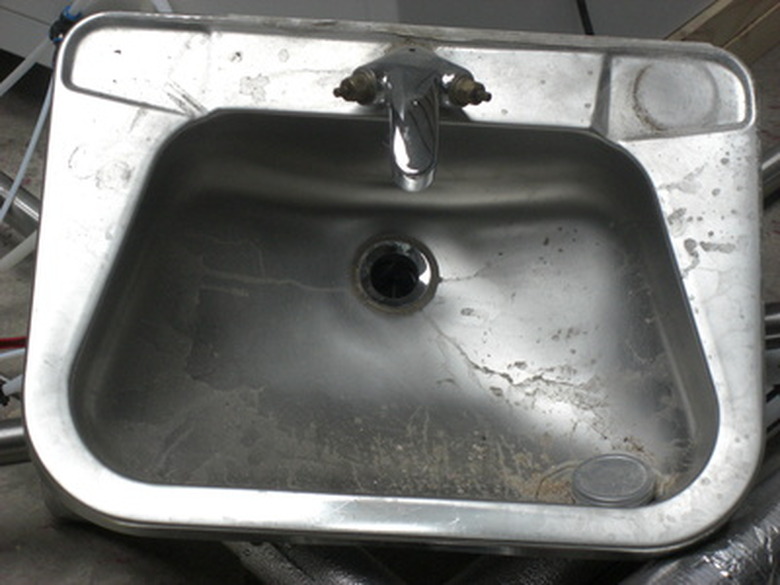Can You Silver Solder Stainless Steel?
For the strongest bond, stainless steel needs to be welded. But if properly prepared, silver solder will adhere to stainless steel, and you can solder copper, brass or more stainless steel onto it. The connection will only be as strong as the silver solder itself, and never as strong as the stainless steel. But if your application does not demand the strength of steel, roll up your sleeves and go for it.
Cleanliness
Cleanliness
The surfaces of the areas you want to solder must be free of any dirt, corrosion, paint, oil or grease. Use solvent and a wire brush or emery paper to clean the surfaces of both materials to be soldered. Solder adheres best to clean, shiny bare metal. But any foreign agent, even ink or pencil marks where you made your measurements, can destroy your solder connection.
Flux and Solder
Flux and Solder
You must use an acid-based soldering flux specifically designed to solder stainless steel. The acid breaks down the stainless steel finish to a point where the solder will adhere. The silver content of the solder determines the strength and the melting point, as both increase with silver content. For example, 95 percent tin and 5 percent silver melts at around 400 degrees. Solder with 20 to 40 percent silver melts at roughly 700 degrees. Select a solder strong enough for your application.
Proper Temperature
Proper Temperature
The size of the area where you want to melt solder, along with the type of solder you use determine the amount of heat you need to melt the solder. Butane or propane heat most silver solders to the melting point, but if you have a large area, MAPP gas burns the hottest. Heat the area slowly to give the flux a chance to operate, and then heat your connection. When the parts get hot enough, the solder will melt instantly when you touch it to the joint and flow into place, but be careful not to overheat the stainless steel. It could oxidize and ruin its stainless qualities.
Precautions
Precautions
Let the hot metal melt the solder. Never try to melt the solder with the torch. Always work in a well-ventilated area. The fumes from the hot acid flux are toxic. Also, never solder stainless steel for an electrical or electronic connection. The acid in the flux will break down an electric connection over time. Drill a hole and use a nut and bolt or screw or a rivet to make an electrical connection to stainless steel.
Cite This Article
MLA
Asmus, Richard. "Can You Silver Solder Stainless Steel?" sciencing.com, https://www.sciencing.com/can-silver-solder-stainless-steel-6148139/. 24 April 2017.
APA
Asmus, Richard. (2017, April 24). Can You Silver Solder Stainless Steel?. sciencing.com. Retrieved from https://www.sciencing.com/can-silver-solder-stainless-steel-6148139/
Chicago
Asmus, Richard. Can You Silver Solder Stainless Steel? last modified March 24, 2022. https://www.sciencing.com/can-silver-solder-stainless-steel-6148139/
